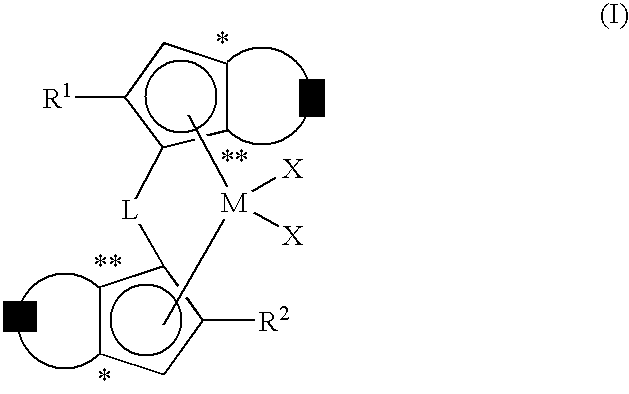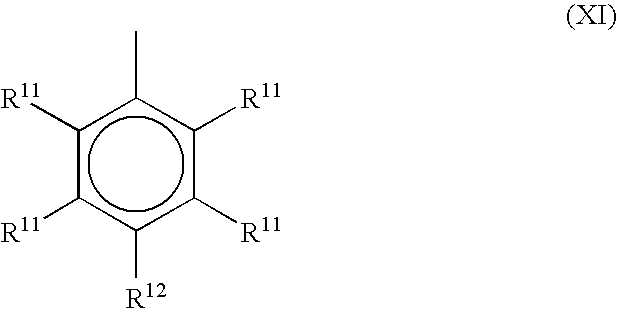Process for producing high melt strength polypropylene
a polypropylene and polymer technology, applied in the field of high-melt strength propylene polymer material, can solve the problems of not providing commercially desired melt strength levels, risking product quality and homogeneity, and affecting melt strength
- Summary
- Abstract
- Description
- Claims
- Application Information
AI Technical Summary
Problems solved by technology
Method used
Image
Examples
example 1
[0091]An isotactic polypropylene homopolymer having an MFR of 2.3 dg / min, PI of 3.3, XI of 99.5%, and degree of crystallinity of 53.3%, was prepared by first prepolymerizing a catalyst commercially available from Basell USA Inc. with propylene, where the yield of pre-polymerized catalyst was about 10-20 g / g-catalyst. The pre-polymerized catalyst and propylene were then continuously fed into a first loop reactor. The homopolymer formed in the first loop reactor and propylene were fed to a second reactor. The temperature of both loop reactors was between 70-71° C. The polymer was discharged from the second reactor, separated from the unreacted monomer and dried. The dried polymer was dry blended with an additive package and then extruded on a 1.25 inch Killion extruder commercially available from Davis-Standard / Killion at 210-220° C. at a screw speed of 100 rpm. The extruded pellets were placed in a reaction glass tube and the tube was purged with nitrogen for at least 15 minutes to e...
example 2
[0092]An isotactic polypropylene homopolymer having an MFR of 11.1 dg / min, PI of 2.1, XI. of 99.7%, and degree of crystallinity of 48.6%, was prepared by first prepolymerizing a catalyst commercially available from Basell USA Inc. with propylene, where the yield of pre-polymerized catalyst was about 30-40 g / g-catalyst. The pre-polymerized catalyst and propylene were then continuously fed into a first loop reactor. The homopolymer formed in the first loop reactor and propylene was fed to a second reactor. The temperature of both loop reactors was 72° C. The polymer was discharged from the second reactor, separated from the unreacted monomer and dried. The dried polymer in the form of flake was blended with an additive package, extruded and irradiated according to the procedure of Example 1.
example 3
[0093]The polymer of Example 3 was prepared according to the procedure of Example 2 except that the radiation dosage was 6 Mrad.
PUM
| Property | Measurement | Unit |
|---|---|---|
| isotactic index | aaaaa | aaaaa |
| polydispersity index | aaaaa | aaaaa |
| polydispersity index | aaaaa | aaaaa |
Abstract
Description
Claims
Application Information
 Login to View More
Login to View More - R&D
- Intellectual Property
- Life Sciences
- Materials
- Tech Scout
- Unparalleled Data Quality
- Higher Quality Content
- 60% Fewer Hallucinations
Browse by: Latest US Patents, China's latest patents, Technical Efficacy Thesaurus, Application Domain, Technology Topic, Popular Technical Reports.
© 2025 PatSnap. All rights reserved.Legal|Privacy policy|Modern Slavery Act Transparency Statement|Sitemap|About US| Contact US: help@patsnap.com



